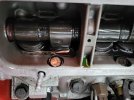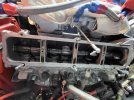petex19
True Classic
I know there's great written articles on this in this group. For some unknown reason my '84X won't run ( not even a spit or spat), just cranks over coming out of winter storage. Drove it into storage. Carbs are getting fuel, spark at the plug. It's stored in a barn and I found a few wires chewed going to the bosch ignition module. I'm repairing the chewed wires as I find them. I want to go back to the basics and set up static timing from scratch. It's been over ten years since I've done it and my memory isn't what it once was. Any good videos out there showing the process from setting TDC to car running?
Done so far....
Fresh fuel, new spark plugs
Done so far....
Fresh fuel, new spark plugs


